The Safety Benefits of Home Automation
In today's fast-paced world, the safety of our homes and loved ones has never been more crucial. With the rise of technology, home automation has emerged as a powerful ally in enhancing safety and security. Imagine being able to monitor your home from anywhere, receiving instant alerts about potential dangers, and having systems that respond to threats automatically. This is not just a dream; it's the reality of modern home automation. In this article, we will explore the various technologies that contribute to a safer living environment, how they work, and why investing in these systems is a smart move for every homeowner.
At the core of home automation lies the smart security system. These systems combine multiple technologies, including surveillance cameras, alarms, and motion detectors, to create a comprehensive security solution. Imagine a network of eyes watching over your property, providing real-time alerts whenever suspicious activity is detected. With features like remote access, you can check in on your home from your smartphone, ensuring that you’re always in the loop, no matter where you are. This seamless integration not only enhances your security but also gives you peace of mind, knowing that your home is protected 24/7.
Another significant aspect of home automation is automated lighting. This technology can be a game-changer when it comes to deterring intruders. By simulating occupancy, automated lighting makes it appear as though someone is home, even when you’re away. Imagine coming home to a well-lit house that looks inviting, rather than a dark, empty shell. Additionally, homeowners can control their lighting remotely, adjusting settings to enhance both convenience and security. This means that if you're running late, you can turn on the lights from your phone, making your arrival safer and more welcoming.
One of the most effective components of automated lighting is motion-sensor lights. These lights automatically illuminate dark areas when movement is detected, significantly increasing visibility around your home. Picture this: you’re walking to your front door at night, and as you approach, the lights flicker on, illuminating your path. This not only enhances your safety by reducing the risk of accidents but also serves as a deterrent to potential intruders who prefer to operate in the shadows.
In addition to boosting security, motion-sensor lights contribute to energy efficiency. By ensuring that lights are only on when needed, homeowners can significantly reduce their electricity consumption and costs. It’s like having a personal assistant for your lights, only turning them on when you’re around. This dual benefit of security and energy savings makes motion-sensor lights an excellent investment for any home.
Homeowners can also enjoy customization options with motion-sensor lights. Whether you want to adjust the sensitivity to avoid false alarms or set specific timing for illumination, these systems can be tailored to fit your lifestyle. This flexibility ensures that your lighting works for you, enhancing safety while providing comfort and convenience.
Perhaps one of the most appealing features of home automation is remote monitoring. With this technology, homeowners can keep an eye on their property from anywhere using their smartphones or tablets. Imagine being at work or on vacation and having the ability to check your security cameras in real-time. This not only provides peace of mind but also equips you with the tools to respond quickly to any potential issues. If an alert goes off, you can assess the situation immediately, allowing for swift actions that could prevent a break-in or other emergencies.
Home automation systems are also designed to keep you safe during emergencies. They can send immediate alerts for critical situations, such as smoke or carbon monoxide detection. In moments where every second counts, these alerts can ensure timely responses, potentially saving lives. Picture a scenario where a fire breaks out while you're asleep; a smart system can wake you up and notify emergency services, giving you a fighting chance to escape safely.
Many modern home automation systems offer integration with local emergency services. This means that when an alarm is triggered, help can be dispatched faster than ever. Imagine the assurance of knowing that your home is not just equipped to alert you, but is also connected to the authorities, enhancing your overall safety. This integration can be a lifesaver, especially in critical situations where every minute matters.
Homeowners can further enhance their safety by customizing their alert settings based on personal preferences. Whether you want notifications for minor incidents or only for major emergencies, these systems can be tailored to your needs. This level of customization ensures that you receive notifications that matter most to you, allowing for a more personalized safety experience.
- What is home automation? - Home automation refers to the use of technology to control various home systems, such as lighting, security, and appliances, remotely or automatically.
- How does home automation enhance safety? - It provides real-time monitoring, alerts for emergencies, and integrates with security systems to protect your home and loved ones.
- Can I control my home automation system remotely? - Yes, most systems allow you to monitor and control your home from anywhere using a smartphone or tablet.
- Are motion-sensor lights energy-efficient? - Absolutely! They only activate when movement is detected, saving energy and reducing electricity bills.

Smart Security Systems
In today's fast-paced world, the safety of our homes has become more crucial than ever. Enter , a game-changing technology that integrates various devices to create a fortress around your property. Imagine having a virtual security guard on duty 24/7, always alert and ready to notify you of any suspicious activity. These systems combine cameras, alarms, and motion detectors to provide comprehensive surveillance that can be monitored in real-time. With just a tap on your smartphone, you can check live feeds from your security cameras, receive instant alerts if an intruder is detected, or even speak to visitors at your door through a smart doorbell. This level of control and awareness transforms how we protect our homes and families.
One of the standout features of smart security systems is their ability to send real-time alerts. Picture this: you’re on vacation, lounging on a beach, and suddenly you receive a notification that your front door has been opened. With a smart security system, you can instantly access your camera feeds to see what’s happening, ensuring you can take immediate action if needed. This capability not only enhances your peace of mind but also empowers you to respond quickly to potential threats.
Moreover, the integration of these systems with smart home technology allows for seamless operation. For instance, if a motion detector senses movement outside your home, it can trigger your outdoor lights to turn on, illuminating the area and potentially scaring off intruders. This synergy between different devices creates a multi-layered defense strategy that traditional security systems simply can’t match.
Additionally, many smart security systems come equipped with advanced features such as facial recognition and geofencing. Facial recognition technology can differentiate between familiar faces and strangers, allowing you to receive alerts only when an unknown person is detected. On the other hand, geofencing uses your phone’s GPS to create a virtual boundary around your home. When you leave this boundary, your security system can automatically arm itself, ensuring your home is secured even if you forget to do it manually.
Investing in a smart security system not only enhances your home’s safety but also adds value to your property. As more people recognize the importance of home automation, homes equipped with these technologies are becoming increasingly desirable. In a world where safety is paramount, having a smart security system is not just a luxury; it’s a necessity that provides both security and peace of mind.

Automated Lighting
Imagine coming home after a long day, and as you approach your front door, the lights automatically turn on, welcoming you with a warm glow. systems not only add a touch of convenience but also play a crucial role in enhancing safety and security. By simulating occupancy when you’re away, these systems can effectively deter potential intruders. You see, when lights flicker on and off at random intervals, it creates the illusion that someone is home. This simple yet effective strategy can keep unwanted visitors at bay, making your home less of a target.
Moreover, with advancements in technology, homeowners can now control their lighting remotely through smartphones or tablets. This feature allows you to turn lights on or off, adjust brightness, or even set schedules from anywhere in the world. Whether you’re at work, on vacation, or just out for a quick errand, having the ability to manage your home’s lighting enhances your security. Just think about it—if a neighbor sees your lights flickering on and off in the middle of the night, they're more likely to think twice before approaching your property.
Another fantastic element of automated lighting is motion-sensor lights. These nifty devices are designed to automatically illuminate dark areas when they detect movement. Picture this: it’s a chilly evening, and you’re heading outside to grab something from your garage. As you step into the dark, the lights spring to life, illuminating your path and reducing the risk of accidents. This not only makes your home safer for you and your family but also acts as a deterrent for anyone looking to sneak around your property.
In addition to bolstering security, motion-sensor lights also contribute to energy efficiency. They ensure that lights are only on when needed, which can significantly reduce your electricity consumption. Let’s face it—nobody likes a hefty electricity bill. By using motion-sensor lights, you can have peace of mind knowing that your home is both secure and energy-efficient. It’s like having your cake and eating it too!
One of the best features of automated lighting systems is their customization options. Homeowners can tailor the settings for motion-sensor lights, adjusting sensitivity and timing to fit their specific needs. For instance, if you have pets that might trigger the sensors, you can set them to ignore smaller movements. This level of control ensures that your lighting system works for you, enhancing safety without causing unnecessary disturbances.
In conclusion, automated lighting is not just about convenience; it’s a powerful tool for enhancing safety and security in your home. With features like remote control, motion-sensor functionality, energy efficiency, and customization options, these systems provide a comprehensive solution for modern homeowners looking to protect their families and properties. So, why not take advantage of this technology? Your home deserves it!
- What are the benefits of automated lighting? Automated lighting enhances security, provides convenience, and can save energy by ensuring lights are only on when needed.
- Can I control automated lighting remotely? Yes, most automated lighting systems allow you to control them via a smartphone or tablet app.
- Are motion-sensor lights effective against intruders? Absolutely! They illuminate dark areas upon detecting movement, which can deter potential intruders.
- How do I customize my motion-sensor lights? You can adjust sensitivity and timing settings through the system's app or control panel, allowing you to tailor them to your specific needs.

Motion-Sensor Lights
Imagine walking up to your home on a dark night, and suddenly, the pathway lights spring to life as if welcoming you back. are not just a convenience; they are a powerful safety feature that can significantly enhance the security of your property. These innovative lights automatically illuminate when they detect movement, ensuring that dark areas around your home are brightly lit, thereby increasing visibility and reducing the risk of accidents or unwanted intrusions.
The technology behind motion-sensor lights leverages infrared sensors to detect body heat or movement. When someone approaches, the sensor triggers the light, creating a well-lit environment that can deter potential intruders. This immediate illumination can be likened to a spotlight shining on an unwelcome guest, effectively making your home less appealing to those with ill intentions. Furthermore, these lights can be strategically placed around your property, such as near entrances, garages, and pathways, to cover all vulnerable spots.
In addition to enhancing security, motion-sensor lights also contribute to energy efficiency. They ensure that lights are only on when needed, reducing electricity consumption and costs. For instance, if you have a motion-sensor light installed in your backyard, it will only activate when someone is present, preventing unnecessary energy waste. This feature not only saves money on your electricity bill but also supports a more sustainable lifestyle.
Another appealing aspect of motion-sensor lights is their customization options. Homeowners can adjust settings such as sensitivity and timing to suit their specific needs. For example, if you have pets that might trigger the sensor, you can modify the sensitivity to avoid false alarms. Additionally, you can set how long the light stays on after being activated, ensuring it aligns with your routine and preferences. This level of customization empowers homeowners to tailor their security measures to fit their lifestyles, making it a truly personalized safety solution.
In summary, motion-sensor lights are an essential component of modern home automation systems. They not only enhance the safety of your home by illuminating dark areas and deterring intruders but also contribute to energy efficiency and offer customization options that cater to individual needs. Embracing this technology not only provides peace of mind but also transforms your living space into a safer haven for you and your family.
- How do motion-sensor lights work? Motion-sensor lights use infrared sensors to detect movement and body heat, automatically turning on when triggered.
- Can I customize the sensitivity of motion-sensor lights? Yes, most motion-sensor lights come with adjustable settings to customize sensitivity and timing according to your preferences.
- Are motion-sensor lights energy-efficient? Absolutely! They only activate when needed, which helps reduce electricity consumption and lower energy bills.
- Where should I install motion-sensor lights? Ideal locations include entrances, driveways, backyards, and any dark areas around your property that require illumination.

Energy Efficiency
This article explores how home automation enhances safety and security, examining various technologies and their impact on protecting homes and families in today's digital age.
Smart security systems integrate cameras, alarms, and motion detectors, providing comprehensive surveillance and real-time alerts, ensuring homeowners are always aware of their property’s security status.
Automated lighting systems can deter intruders by simulating occupancy, enhancing safety while allowing homeowners to control their lighting remotely for convenience and security.
Motion-sensor lights automatically illuminate dark areas when movement is detected, increasing visibility and reducing the risk of accidents or unwanted intrusions around the home.
In addition to security, motion-sensor lights contribute to by ensuring lights are only on when needed, reducing electricity consumption and costs. Imagine walking into a room only to find the lights flick on as you enter—this not only creates a welcoming atmosphere but also conserves energy by avoiding unnecessary usage. The technology behind these lights is designed to detect movement and adjust accordingly, which is a win-win for both your wallet and the environment.
Moreover, the energy savings can be quite significant. For instance, a household that implements motion-sensor lighting can save up to 30% on their lighting bills compared to traditional lighting systems. To put this into perspective, consider the following table that highlights potential savings:
| Lighting Type | Estimated Monthly Cost | Estimated Annual Cost |
|---|---|---|
| Traditional Lighting | $50 | $600 |
| Motion-Sensor Lighting | $35 | $420 |
This table illustrates how switching to motion-sensor lights can lead to substantial savings over time. Additionally, homeowners can customize settings for motion-sensor lights, adjusting sensitivity and timing to suit their specific needs and preferences for enhanced safety. For example, you might want the lights to stay on longer when you’re hosting a gathering in your backyard, or perhaps you prefer them to turn off quickly when everyone is inside, ensuring no energy is wasted.
Ultimately, embracing energy-efficient solutions not only enhances the security of your home but also supports a more sustainable lifestyle. As we become increasingly aware of our environmental impact, these smart technologies offer a practical way to contribute positively while enjoying the benefits of modern living.
Remote monitoring allows homeowners to keep an eye on their property from anywhere using smartphones or tablets, providing peace of mind and quick response capabilities.
Home automation systems can send immediate alerts for emergencies, such as smoke or carbon monoxide detection, ensuring timely responses and potentially saving lives.
Many systems integrate with local emergency services, allowing for faster response times in critical situations, enhancing the overall safety of the home.
Homeowners can customize alert settings based on personal preferences, ensuring they receive notifications that matter most to them, whether for minor or major incidents.
- What is home automation? Home automation refers to the use of technology to control various home systems and appliances remotely for convenience and security.
- How does home automation enhance security? It enhances security through smart security systems, automated lighting, and emergency alerts, providing homeowners with better control and awareness of their home environment.
- Are motion-sensor lights energy-efficient? Yes, motion-sensor lights are designed to save energy by only activating when needed, which can lead to significant savings on electricity bills.
- Can I customize my home automation settings? Absolutely! Most home automation systems allow for extensive customization to fit your personal preferences and lifestyle needs.
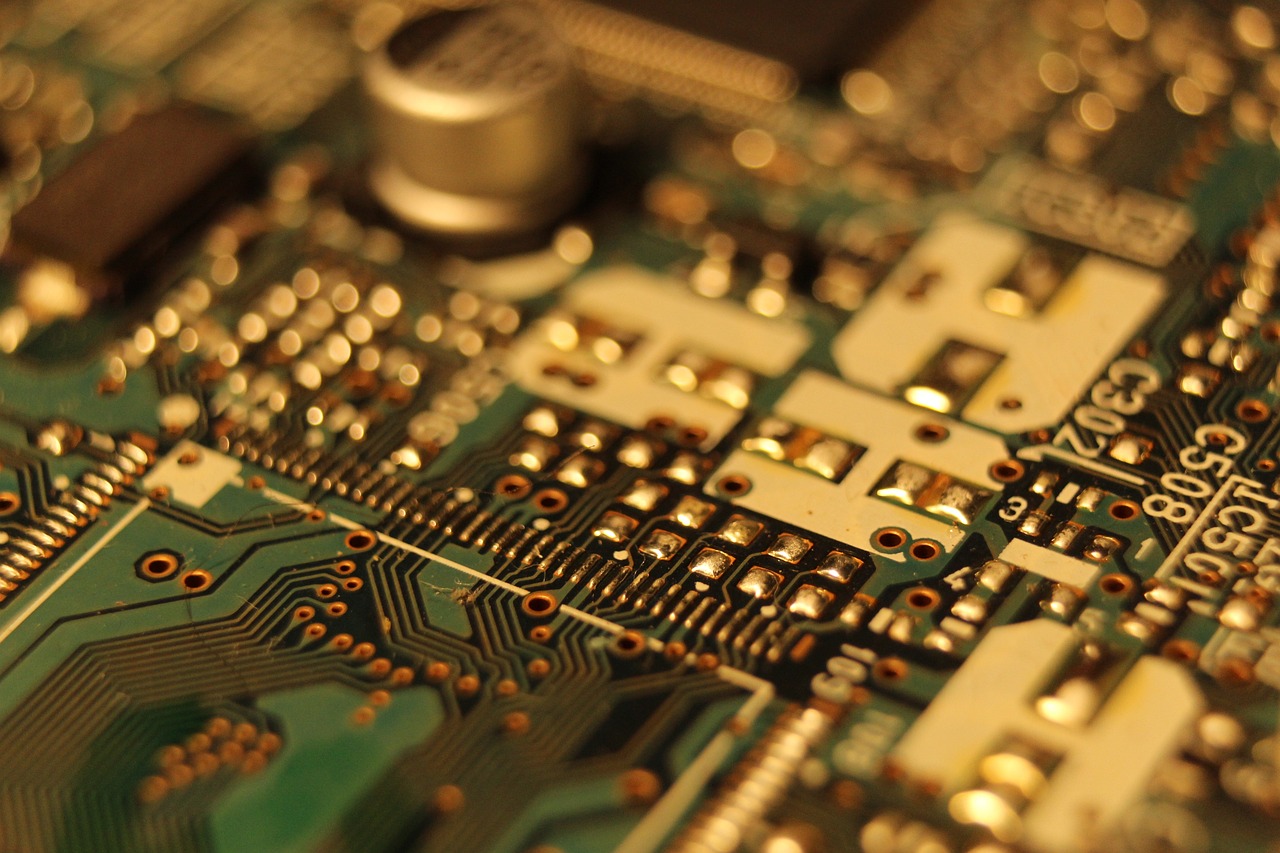
Customization Options
When it comes to enhancing the safety of your home through automation, play a pivotal role. Homeowners today are not just looking for off-the-shelf solutions; they want systems that cater to their unique lifestyles and preferences. Imagine being able to adjust the sensitivity of your motion-sensor lights based on the time of day or the season. For instance, during summer, when the sun sets later, you might want the lights to activate with a higher threshold of movement, while in winter, you could set them to trigger with minimal motion to ensure safety during those dark, cold evenings.
Furthermore, many modern systems allow you to set specific timing schedules. This means you can program your lights to turn on and off at particular times, simulating occupancy even when you’re away. This is particularly useful for deterring potential intruders, as it creates the illusion that someone is home. You can also customize the duration for which the lights stay on after detecting motion, ensuring that they meet your needs without being overly sensitive or unnecessarily draining energy.
Another exciting feature of customization is the ability to integrate with other smart home devices. For example, you can set your motion-sensor lights to work in conjunction with your smart security camera. If the camera detects movement, it can trigger the lights to turn on, illuminating the area and providing a clearer view for the camera. This kind of integration not only enhances security but also provides a seamless experience for the homeowner.
Many systems also offer mobile apps that allow you to control your lighting remotely. Imagine being on vacation and receiving an alert that motion was detected in your yard. With just a few taps on your smartphone, you can turn on the outdoor lights, startling any potential intruder and giving you peace of mind. The customization options extend to alert settings as well; you can choose how and when you receive notifications, ensuring that you’re always in the loop without being overwhelmed by unnecessary alerts.
In summary, the available in modern home automation systems empower homeowners to create a security setup that is not only effective but also tailored to their specific needs. Whether it’s adjusting light sensitivity, setting schedules, or integrating with other devices, these features enhance both safety and convenience, making your home a fortress of security.
- What are the benefits of customizing my home automation system?
Customization allows you to tailor your security features to your specific lifestyle, ensuring maximum safety and convenience. - Can I control my home automation system remotely?
Yes, most modern systems come with mobile applications that enable remote control of your devices from anywhere. - Are motion-sensor lights energy-efficient?
Absolutely! They only activate when movement is detected, which helps reduce unnecessary energy consumption. - How can I integrate my motion-sensor lights with other devices?
Many systems allow for integration, enabling your lights to work in conjunction with security cameras and alarms for enhanced safety.
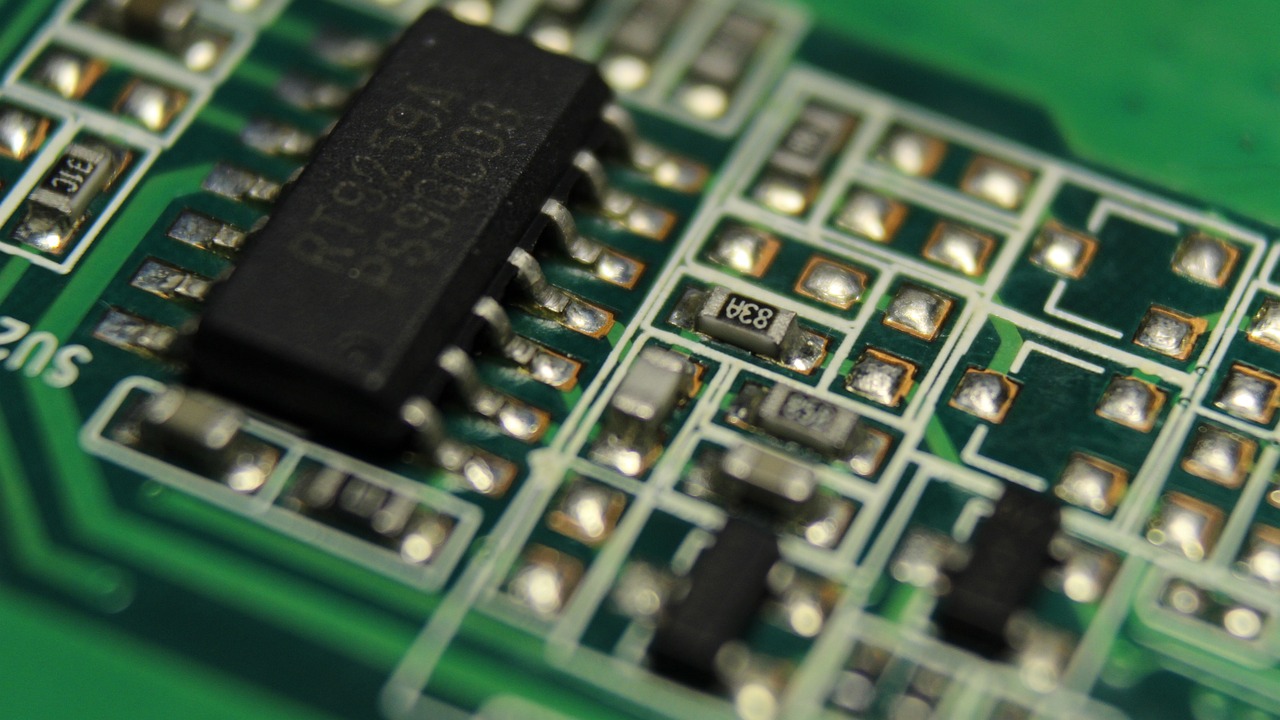
Remote Monitoring
This article explores how home automation enhances safety and security, examining various technologies and their impact on protecting homes and families in today's digital age.
Smart security systems integrate cameras, alarms, and motion detectors, providing comprehensive surveillance and real-time alerts, ensuring homeowners are always aware of their property’s security status.
Automated lighting systems can deter intruders by simulating occupancy, enhancing safety while allowing homeowners to control their lighting remotely for convenience and security.
Motion-sensor lights automatically illuminate dark areas when movement is detected, increasing visibility and reducing the risk of accidents or unwanted intrusions around the home.
In addition to security, motion-sensor lights contribute to energy efficiency by ensuring lights are only on when needed, reducing electricity consumption and costs.
Homeowners can customize settings for motion-sensor lights, adjusting sensitivity and timing to suit their specific needs and preferences for enhanced safety.
Imagine being able to keep an eye on your home no matter where you are in the world. is a game-changer in home safety, allowing homeowners to check in on their property through smartphones or tablets. This technology provides not just peace of mind but also the ability to act quickly in case of any suspicious activity or emergencies.
With remote monitoring, you can:
- View live video feeds from security cameras installed around your home.
- Receive real-time alerts when motion is detected or alarms are triggered.
- Control and adjust your home security settings remotely.
This capability is particularly useful for busy families or those who travel frequently. Instead of worrying about whether you left the garage door open or if someone is lurking around your property, you can simply pull out your phone and check. It’s like having a personal security guard available 24/7!
Moreover, many modern systems allow for two-way audio communication, enabling you to speak with visitors or intruders through your devices. This feature can deter potential threats simply by letting them know they are being watched. It's akin to having an invisible shield around your home, ready to respond to any situation at a moment's notice.
In addition to security, remote monitoring can also help you keep tabs on other aspects of your home, such as:
- Temperature control through smart thermostats.
- Water leak detection systems.
- Smart smoke and carbon monoxide detectors.
By integrating these features, homeowners can ensure their property is not just secure but also well-maintained even when they are away. The ability to monitor your home remotely is not just a luxury; it’s a necessity in today’s fast-paced world.
Home automation systems can send immediate alerts for emergencies, such as smoke or carbon monoxide detection, ensuring timely responses and potentially saving lives.
Many systems integrate with local emergency services, allowing for faster response times in critical situations, enhancing the overall safety of the home.
Homeowners can customize alert settings based on personal preferences, ensuring they receive notifications that matter most to them, whether for minor or major incidents.
Q: How does remote monitoring work?
A: Remote monitoring works through smart devices connected to your home network. You can access live feeds and alerts via a mobile app or web portal.
Q: Can I control my security system remotely?
A: Yes! Most smart security systems allow you to arm/disarm alarms, view camera feeds, and receive alerts from anywhere.
Q: What happens if my internet goes down?
A: Many systems have backup options, such as cellular connections, to ensure monitoring continues even if your internet is disrupted.
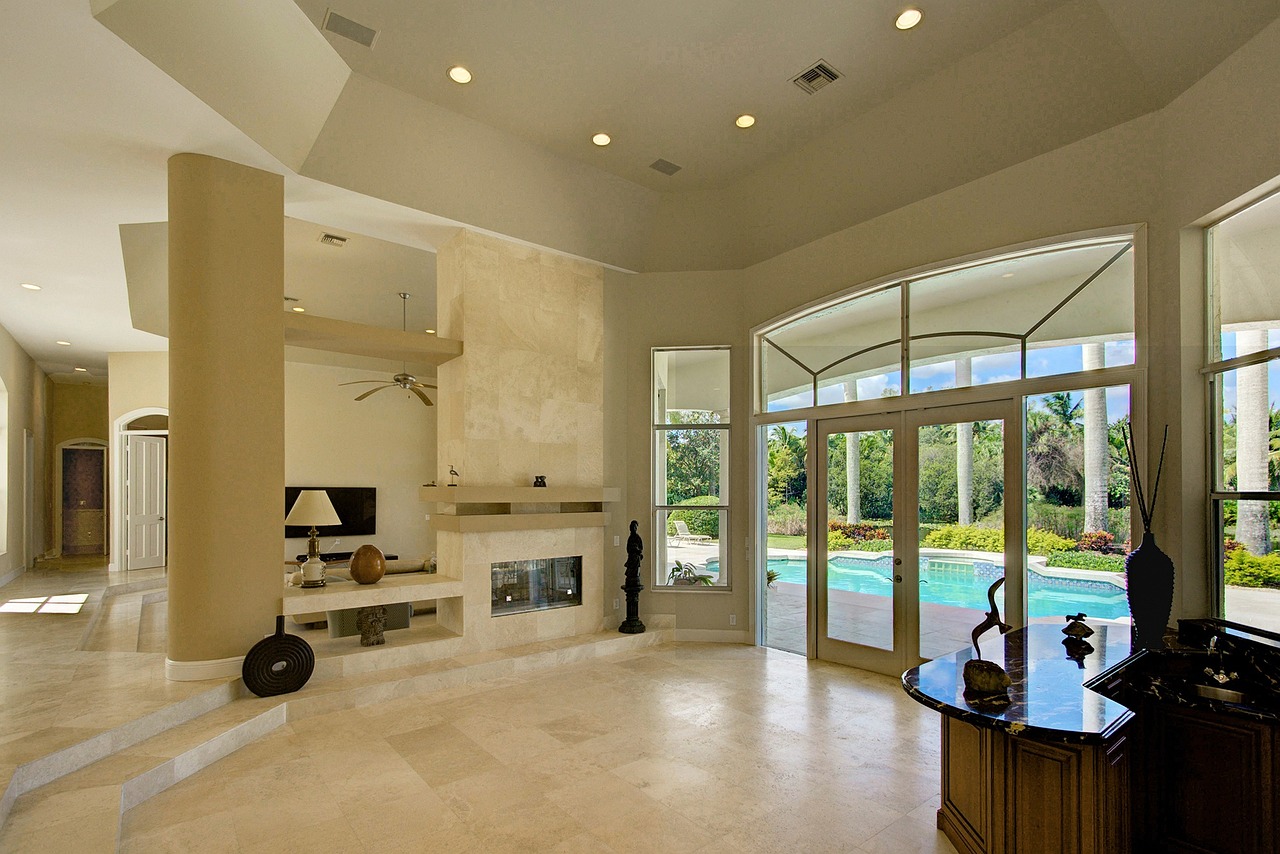
Emergency Alerts
In today's fast-paced world, the importance of cannot be overstated. Home automation systems are designed to keep you and your loved ones safe by providing immediate notifications for various emergencies. Imagine being alerted about a smoke or carbon monoxide leak while you're at work or on vacation. This is not just a luxury; it's a necessity in ensuring your family's safety. With these systems in place, you can rest easy knowing that you’ll be informed promptly, allowing for swift action when it matters most.
One of the standout features of modern home automation systems is their ability to send real-time alerts directly to your smartphone or tablet. This means that no matter where you are, you can stay connected to your home. Whether you’re out for a jog, at the office, or traveling across the country, you can receive notifications about potential dangers. These alerts can be customized based on your preferences, ensuring that you’re informed about what matters most to you. For instance, you might want to receive immediate notifications for smoke detection but prefer less frequent updates for minor issues.
Moreover, many of these systems are equipped with advanced sensors that can detect various threats, including:
- Smoke from fires
- Carbon monoxide leaks
- Intrusion alerts from security systems
- Water leaks from plumbing issues
Each of these alerts plays a crucial role in maintaining a safe environment. For example, carbon monoxide is a silent killer, and having a system that alerts you instantly can be life-saving. Similarly, smoke detectors with immediate notifications can prevent a small fire from turning into a devastating disaster.
Another significant advantage of home automation systems is their ability to integrate with local emergency services. In critical situations, such as a fire or break-in, these systems can automatically notify the authorities, ensuring a faster response time. This integration can be a game-changer, as every second counts during emergencies. It’s like having a silent guardian watching over your home, ready to act when you can’t.
For those who value peace of mind, customizable alert settings are a game-changer. You can tailor how and when you receive notifications, which can be particularly useful for families with varying needs. For instance, parents might want to ensure they receive alerts for any unusual activity, while others may prefer to only be notified about significant emergencies. This level of control empowers homeowners to manage their safety effectively.
In conclusion, emergency alerts through home automation systems not only enhance safety but also provide a sense of security that is invaluable in today’s world. With the ability to monitor your home remotely and receive immediate notifications, you can take proactive steps to protect your family and property. It’s a smart investment that pays off in peace of mind, knowing that help is just a notification away.
1. What types of emergencies can home automation systems detect?
Home automation systems can detect various emergencies, including smoke, carbon monoxide, water leaks, and unauthorized intrusions.
2. How do I receive alerts from my home automation system?
Alerts can be sent to your smartphone or tablet through dedicated apps, ensuring you stay informed regardless of your location.
3. Can I customize my alert settings?
Yes, most home automation systems allow you to customize alert settings based on your preferences, so you receive notifications that matter most to you.
4. Do home automation systems notify emergency services automatically?
Many systems have the capability to automatically notify local emergency services in critical situations, enhancing your home's safety.
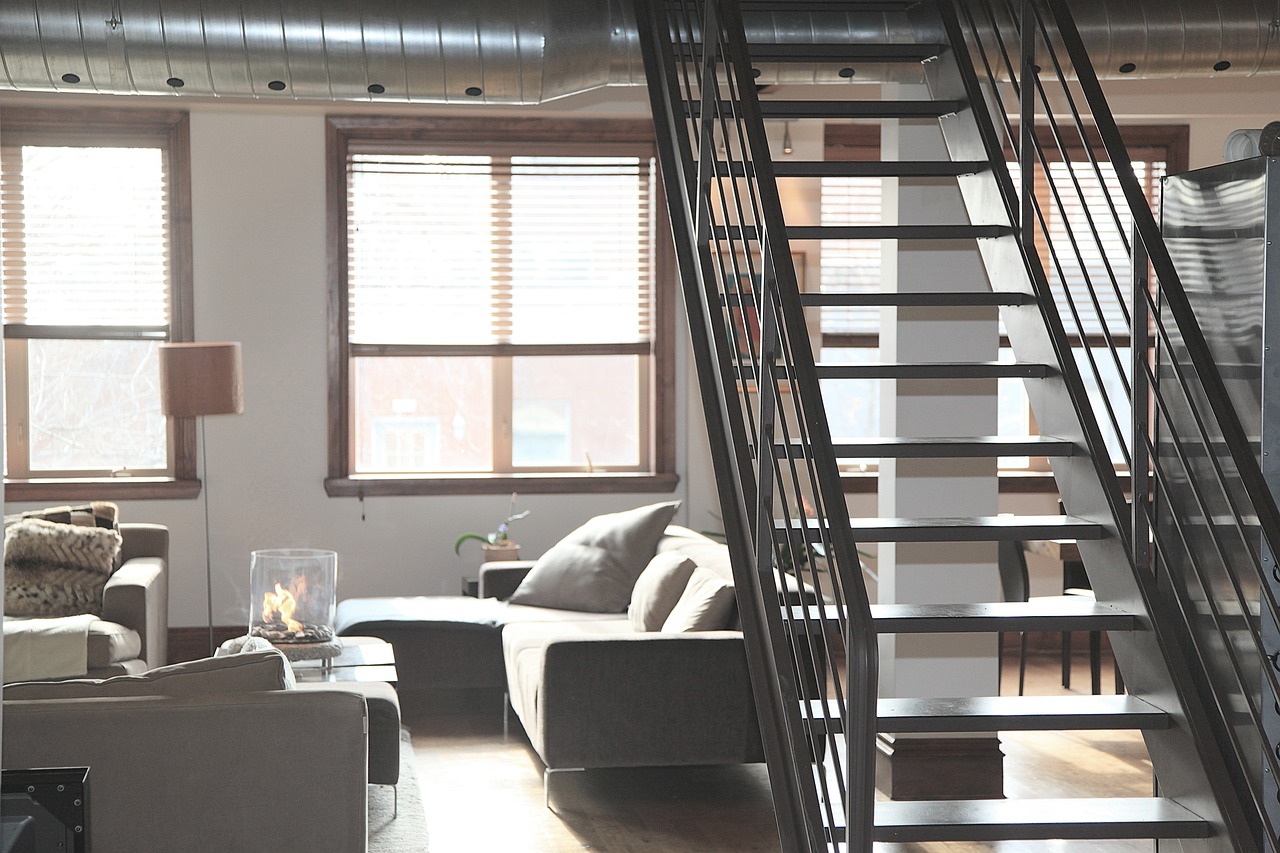
Integration with Emergency Services
When it comes to safety, having a home automation system that integrates seamlessly with emergency services can be a game-changer. Imagine this: you’re enjoying a quiet evening at home when suddenly, your smoke detector goes off. Instead of fumbling with your phone to call for help, your smart home system instantly alerts the local fire department. This is the kind of peace of mind that integration with emergency services provides. It’s like having a personal safety net that springs into action the moment you need it.
Many modern home automation systems are designed to connect directly with emergency responders. This means that in the event of a fire, burglary, or medical emergency, your system can automatically notify the relevant authorities, ensuring they are dispatched to your location without delay. The beauty of this integration lies not only in its speed but also in its reliability. Emergency services can receive crucial information, such as your exact address and the type of emergency, allowing them to prepare before they even arrive.
Furthermore, these systems often come equipped with features that enhance communication with emergency personnel. For instance, some systems can provide live video feeds from security cameras, giving responders a clear picture of the situation as they approach your home. This can be particularly vital in scenarios like a home invasion, where knowing the number of intruders or their behavior can significantly influence how responders handle the situation.
Moreover, homeowners can customize their emergency settings to ensure that the right responses are triggered. For example, if you have a medical alert system, it can be programmed to contact emergency services automatically if it detects a fall or a sudden health crisis. This level of customization means that your home automation system can be tailored to fit the unique needs of your family, making it an invaluable tool for enhancing safety.
To sum it up, the integration of home automation systems with emergency services not only enhances your home’s security but also provides a layer of protection that can be crucial in life-threatening situations. The ability to have immediate alerts and responses can mean the difference between disaster and safety, making it a wise investment for any homeowner.
- How does home automation improve safety? Home automation enhances safety through features like smart security systems, automated lighting, and emergency alerts that work together to protect your home.
- Can I monitor my home remotely? Yes! Many home automation systems allow you to monitor your home in real-time from your smartphone or tablet, providing peace of mind wherever you are.
- What should I do if my home automation system alerts me of an emergency? Always take the alerts seriously. If your system notifies you of smoke, carbon monoxide, or any other emergency, evacuate immediately and call emergency services if necessary.
- Are home automation systems expensive? The cost varies widely depending on the features and technology you choose. However, many systems offer scalable options to fit different budgets.
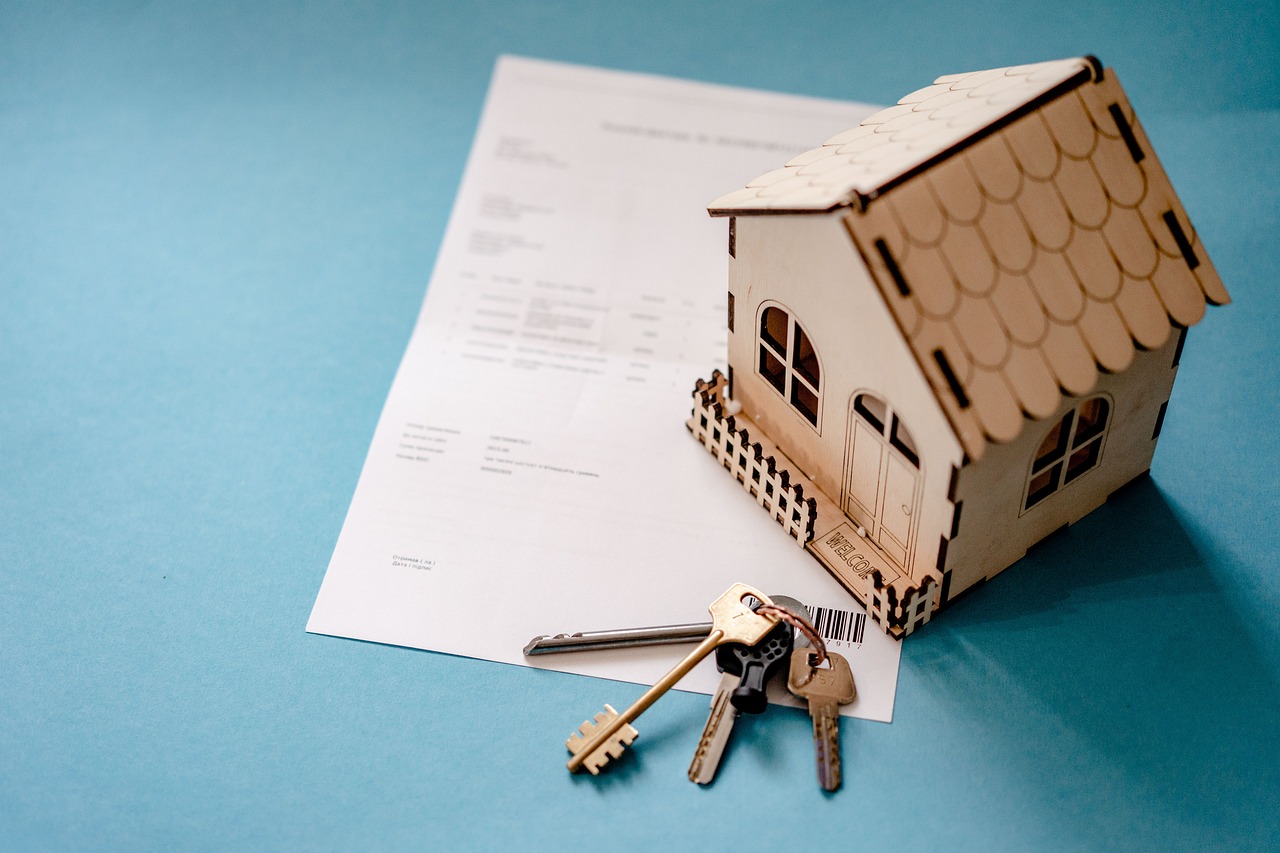
Customizable Alert Settings
This article explores how home automation enhances safety and security, examining various technologies and their impact on protecting homes and families in today's digital age.
Smart security systems integrate cameras, alarms, and motion detectors, providing comprehensive surveillance and real-time alerts, ensuring homeowners are always aware of their property’s security status.
Automated lighting systems can deter intruders by simulating occupancy, enhancing safety while allowing homeowners to control their lighting remotely for convenience and security.
Motion-sensor lights automatically illuminate dark areas when movement is detected, increasing visibility and reducing the risk of accidents or unwanted intrusions around the home.
In addition to security, motion-sensor lights contribute to energy efficiency by ensuring lights are only on when needed, reducing electricity consumption and costs.
Homeowners can customize settings for motion-sensor lights, adjusting sensitivity and timing to suit their specific needs and preferences for enhanced safety.
Remote monitoring allows homeowners to keep an eye on their property from anywhere using smartphones or tablets, providing peace of mind and quick response capabilities.
Home automation systems can send immediate alerts for emergencies, such as smoke or carbon monoxide detection, ensuring timely responses and potentially saving lives.
Many systems integrate with local emergency services, allowing for faster response times in critical situations, enhancing the overall safety of the home.
One of the standout features of modern home automation systems is their . Homeowners can tailor notifications to fit their lifestyle and priorities, ensuring that they only receive the alerts that truly matter. For instance, if you're a busy professional, you might prefer to receive alerts for major incidents, such as break-ins or fire alarms, while opting out of notifications for minor disturbances, like a pet triggering a motion sensor. This level of customization not only enhances the user experience but also helps in maintaining a sense of calm amidst the chaos of daily life.
Moreover, these systems often allow for different alert methods, whether it's a loud alarm, a silent push notification to your smartphone, or even a text message. This flexibility means that you can choose how you want to be alerted based on your current situation. For example, if you're at work, a text message might be more appropriate than a loud alarm, which could disturb your colleagues.
Homeowners can also set time-based alerts. Imagine being able to receive notifications only during specific hours when you're away from home, such as during your work hours or while on vacation. This feature can significantly reduce the number of unnecessary alerts, allowing you to focus on what truly matters without constant interruptions.
In addition, the integration of these systems with smart assistants can provide a seamless experience. You can simply ask your smart assistant to adjust your alert settings or provide updates on your home’s status. This level of convenience makes managing your home’s security not just effective but also incredibly user-friendly.
Ultimately, customizable alert settings empower homeowners to take control of their home security, ensuring they remain informed without being overwhelmed. It’s like having a personal security guard that knows exactly how you like to be notified, ensuring your peace of mind while you go about your daily routine.
- What are the benefits of home automation for security? Home automation enhances security by providing real-time monitoring, customizable alerts, and integration with emergency services.
- Can I control my home automation system remotely? Yes, most home automation systems allow remote access through smartphones or tablets, enabling you to monitor and control your home from anywhere.
- How do customizable alert settings work? Customizable alert settings enable homeowners to choose which notifications they receive and how they are alerted, allowing for a tailored security experience.
- Are motion-sensor lights energy-efficient? Absolutely! Motion-sensor lights save energy by only turning on when needed, thus reducing electricity costs.
Frequently Asked Questions
- What are the main benefits of home automation for safety?
Home automation enhances safety by integrating smart security systems, automated lighting, and emergency alerts. These technologies work together to provide comprehensive surveillance, deter intruders, and ensure timely responses to emergencies, giving homeowners peace of mind.
- How do smart security systems improve home safety?
Smart security systems use a combination of cameras, alarms, and motion detectors to monitor your property in real-time. They send instant alerts to your smartphone, allowing you to stay informed about any suspicious activity and respond quickly if needed.
- Can automated lighting really deter intruders?
Absolutely! Automated lighting can simulate occupancy by turning lights on and off at scheduled times or in response to motion. This unpredictability can make it seem like someone is home, effectively deterring potential intruders.
- What are motion-sensor lights and how do they work?
Motion-sensor lights automatically turn on when they detect movement, illuminating dark areas and increasing visibility. This not only enhances safety by reducing the risk of accidents but also helps to deter unwanted visitors from approaching your home.
- Are motion-sensor lights energy efficient?
Yes! Motion-sensor lights contribute to energy efficiency by ensuring that lights are only on when needed. This means you can save on electricity costs while still maintaining a safe and secure environment around your home.
- How does remote monitoring work in home automation?
Remote monitoring allows homeowners to view live feeds from security cameras and receive alerts on their smartphones or tablets. This feature provides the ability to keep an eye on your property from anywhere, ensuring quick responses to any potential issues.
- What types of emergencies can home automation systems detect?
Home automation systems can detect various emergencies, including smoke, carbon monoxide, and water leaks. When these hazards are detected, the system sends immediate alerts, allowing homeowners to take prompt action and potentially save lives.
- Can I customize alert settings for my home automation system?
Yes! Most home automation systems allow you to customize alert settings based on your preferences. You can choose which notifications you want to receive, whether for minor incidents or major emergencies, ensuring you stay informed about what matters most.
- How do home automation systems integrate with emergency services?
Many home automation systems are designed to integrate with local emergency services. In the event of an emergency, these systems can automatically notify the authorities, ensuring faster response times and enhancing the overall safety of your home.



















